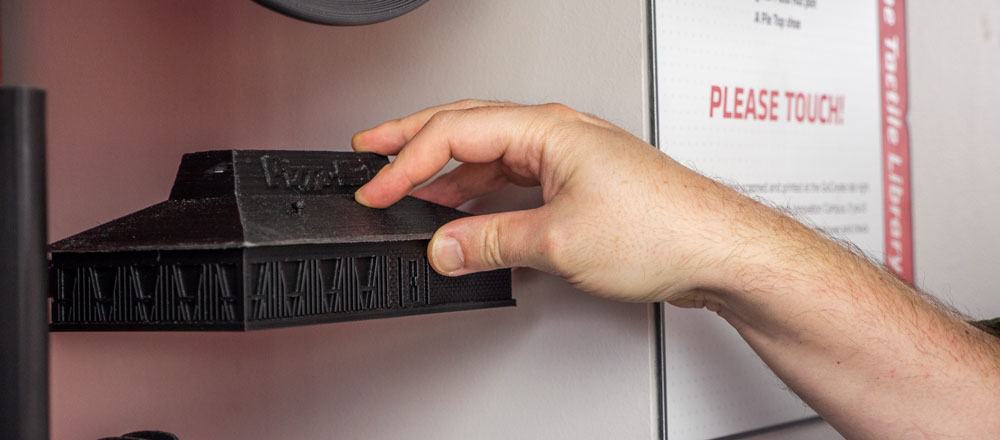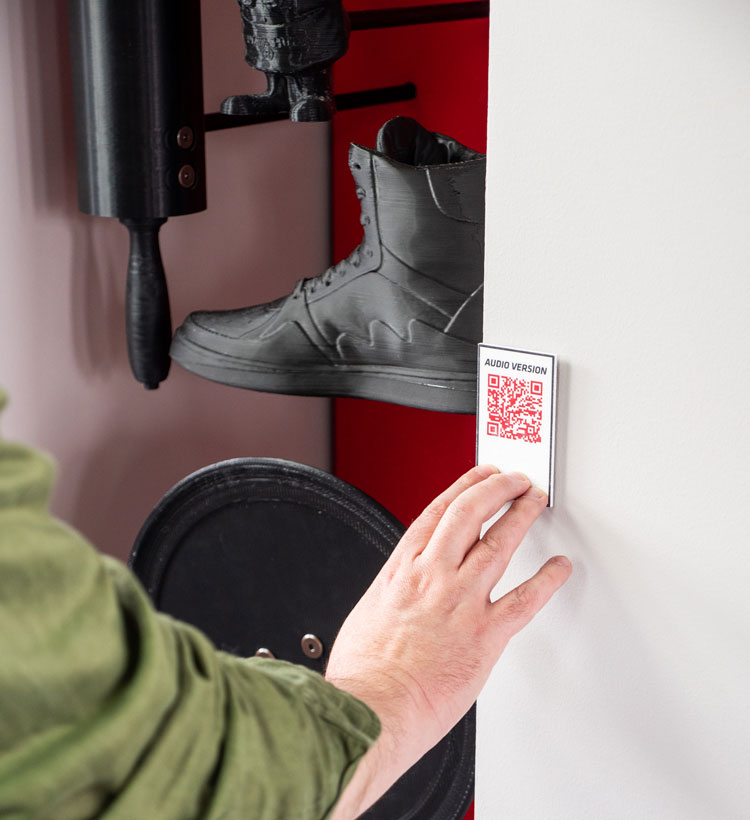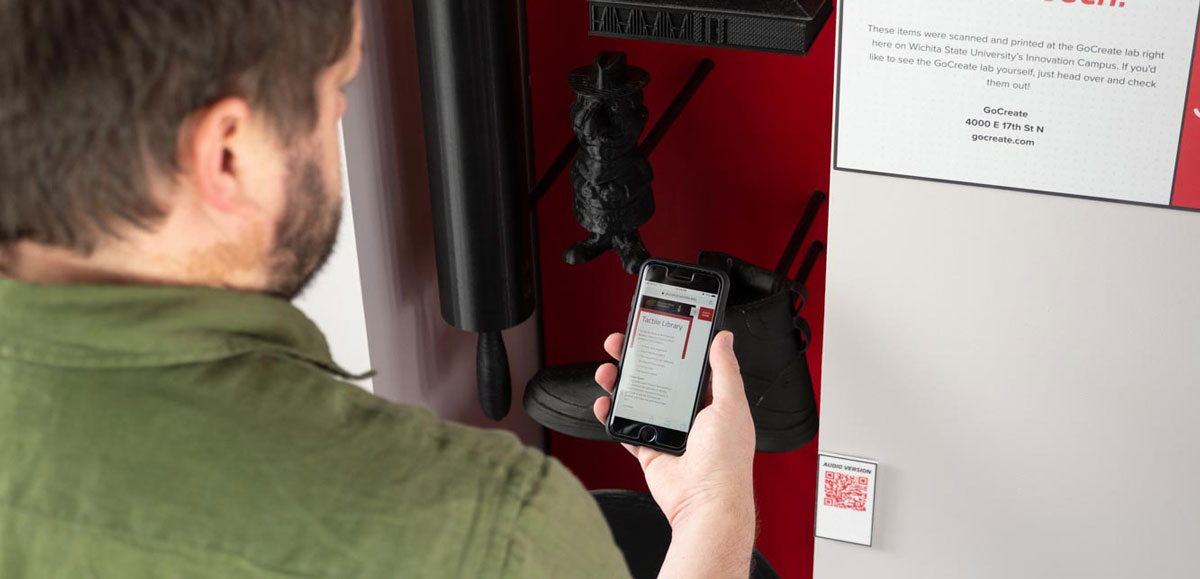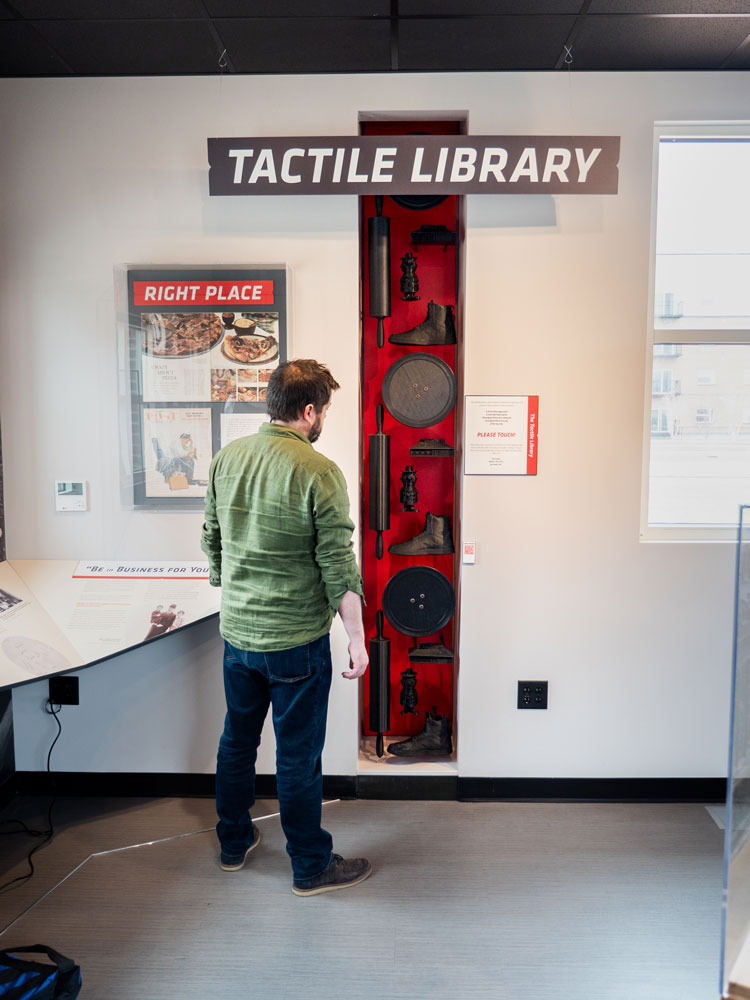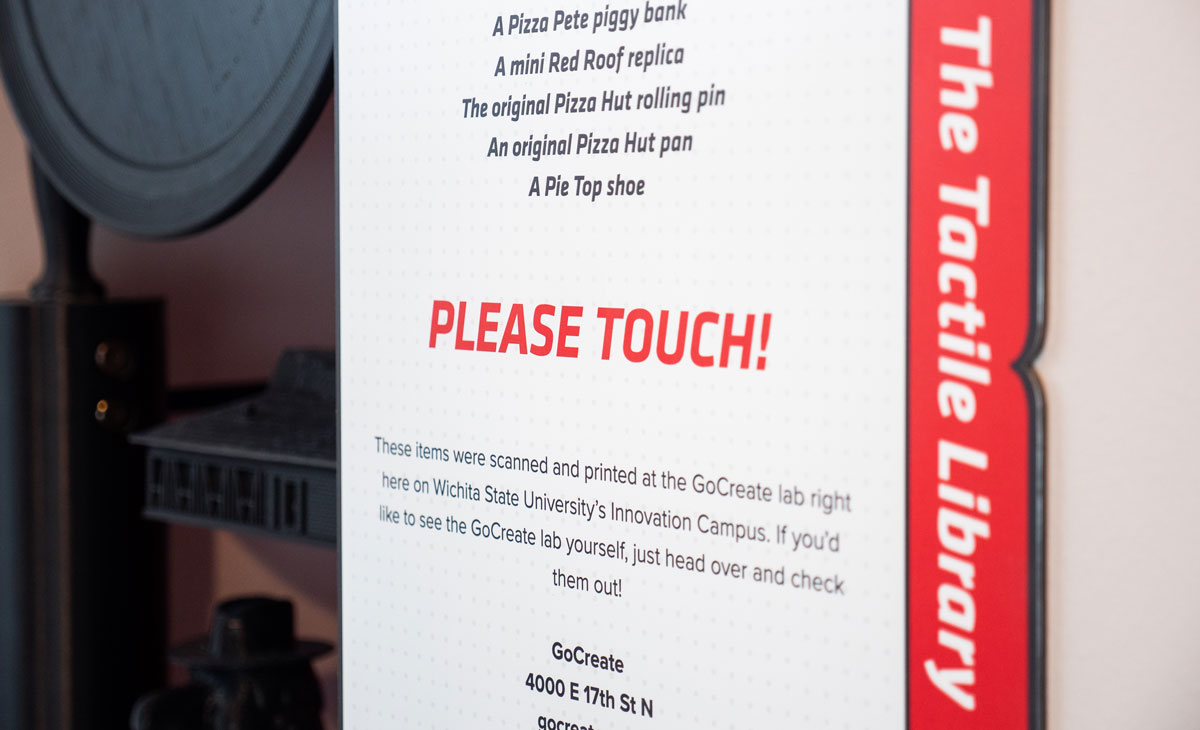
The Tactile Library @ the Pizza Hut Museum
Good design is achieved through practice, patience, and hard work.
But new design—something truly novel, that does or says something in a unique way—is a combination of the elements that make good design, plus a confluence of circumstance, timing, and an open mind.
We’ve done plenty of good exhibit design, design we’re proud of and want to share with the world. But the moments where we get the chance to do something new are much fewer and farther between. We were lucky enough to find an opportunity to do something new in the world of accessible exhibit design. It happened on an unlikely project—a small museum celebrating Pizza Hut. Within the tiny confines of the building that housed the original Pizza Hut, we were afforded the opportunity to make something new.
In collaboration with the Media Resource Center at WSU and Envision, a Wichita-based organization dedicated to improving the lives of people who are blind or visually impaired, we designed, fabricated and installed a tactile library.
As is often the case with new things, the tactile library is made of component parts that already existed out in the world. What was unique in this case was the culture of accessibility brought to bear on the technologies and tools used to make the tactile library. Wichita State University, in partnership with the National Federation for the Blind, was in the process of reimagining the WSU campus and classes to be accessible to students and visitors with low vision. The Pizza Hut Museum provided an opportunity to road test ideas and innovative practices in designing for and with people with low vision.
As luck would have it, Wichita State University is home to one of the nation’s best equipped aeronautical engineering departments, as well as a maker space that includes 3D scanning capacity. So as we brainstormed together with WSU and Envision, asking how to make a museum space that was open and welcoming to visitors with low vision, even while housing fragile and rare artifacts, together we had a new idea: We should scan some of the key artifacts, have them printed at WSU’s National Institute for Aviation Research (NIAR), and mount the 3D printed copies of the artifacts in a pleasing sculptural form in a corner of the museum that would have otherwise gone under-utilized.
Scanning and 3D printing artifacts isn’t what makes the tactile library new. Many museums utilize these quickly evolving technologies to make copies of their artifacts to share with their visitors. And using 3D prints to help differently abled visitors explore an organization’s collections isn’t a novel idea, either. Rather, what makes the tactile library a new design idea is that it makes these 3D prints available at all times, and to all visitors. A repeating pattern of objects isn’t just aesthetically pleasing, but affords access to visitors with different reaching abilities. There’s no docent required, no specially planned time when the museum becomes more accessible.
The new idea, the one that we hope to explore in other exhibits, is always-available accessible design, which is available to patrons whenever they choose to visit. It meets visitors where they are, not where we ask them to be.
- It allows a person with low vision to explore the iconic architectural profile of a Pizza Hut building.
- It provides an opportunity for a visitor on the spectrum to feel the exhibit instead of just seeing and hearing it.
- It affords a visitor of small stature equal access to the exact same content as visitors of typical stature.
We’ve been lucky enough to have the opportunity to collaborate with our clients in order to do something legitimately new. The tactile library at the Pizza Hut Museum a small thing in a small space, and at first glance it may not seem like much. But new designs, which at first might seem small, can make outsized impacts.
